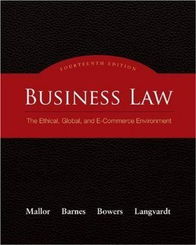The Ethical Conundrums of Textile Engineering:A Global Perspective
: The Ethical Conundrums of Textile Engineering: A Global Perspective,Abstract:,Textile engineering, a field that has revolutionized the fabrication of textile materials, is increasingly faced with ethical dilemmas. These challenges arise from the use of natural resources, labor practices, and environmental impacts, all of which have global implications. This paper explores the ethical conundrums in textile engineering, highlighting the importance of sustainability, fair trade, and responsible production practices. It argues for a more holistic approach to textile engineering that considers both economic and ethical factors, and calls for increased transparency and accountability in the industry. By addressing these ethical issues, textile engineers can contribute to a more sustainable and equitable future.
Introduction: Textile engineering is a multidisciplinary field that involves the design, manufacture, and application of textile materials. It plays a crucial role in the global economy, providing essential products for clothing, footwear, home furnishings, and more. However, with the increasing demand for sustainable and ethically responsible textile products, the industry faces numerous ethical dilemmas that require careful consideration.

Ethical Dilemmas in Textile Engineering:
Fair Trade Practices: Textile manufacturers must ensure that they are not contributing to exploitation or deprivation of workers in developing countries. This requires transparency in supply chain management and adherence to fair trade standards.
| Fair Trade Standards | Description |
|---|---|
| Fair Labor Standards | Mandates minimum wages and safe working conditions for workers. |
| Organic Cotton | Ensures that cotton is grown without harmful pesticides and chemicals. |
| Sustainable Production Methods | Use eco-friendly practices to minimize waste and reduce environmental impact. |
Environmental Impact: Textile production has a significant carbon footprint due to energy consumption and water usage. Companies must adopt sustainable practices to minimize their environmental impact.
| Sustainable Practices | Description |
|---|---|
| Renewable Energy | Use solar, wind, or other renewable energy sources for manufacturing processes. |
| Water Conservation | Optimize water usage by implementing efficient washing and dyeing methods. |
| Waste Management | Implement recycling programs and composting facilities to reduce textile waste. |
Social Responsibility: Textile companies have a responsibility to promote social justice and equality. They should avoid using child labor and discriminate against marginalized communities.
| Social Responsibilities | Description |
|---|---|
| Non-Discriminatory Practices | Avoid biases and discrimination based on race, gender, or sexual orientation. |
| Support for Workers' Rights | Provide safe working conditions and fair wages for all employees. |
| Promotion of Equality | Address issues such as gender inequality and provide equal opportunities for all. |
Transparency in Marketing: Consumers expect transparency in the marketing of textile products. Companies must disclose the origin and treatment of raw materials used in their products.
| Transparency Metrics | Description |
|---|---|
| Raw Material Origin | Clearly state where the raw materials come from, including any ethical concerns. |
| Treatment of Raw Materials | Disclose any harmful treatments or processes used in the manufacturing process. |
| Fair Trade Certifications | List any certifications obtained for ensuring fair trade practices. |
Case Study: One example of a company addressing these ethical dilemmas is Patagonia. The company was founded in 1973 by Yvon Chouinard and focuses on sustainable fashion. Patagonia has implemented several ethical practices, including using recycled materials in their products, promoting fair labor practices, and supporting social causes. Their commitment to sustainability has earned them a reputation for ethical business practices.
Conclusion: As the textile industry continues to grow, it is crucial for companies to prioritize ethical practices to maintain consumer trust and protect the environment. By addressing the ethical conundrums outlined above, textile companies can create a more responsible and sustainable future for themselves and society at large.
随着纺织品工程的发展,伦理问题逐渐凸显,纺织品工程涉及众多领域,包括材料选择、生产过程、产品设计等,这些环节都涉及到人们的利益和责任,纺织品工程中的伦理问题不仅关乎个人利益,更关乎社会公正和可持续发展。
纺织品工程伦理问题概述
材料选择伦理问题
在材料选择过程中,需要考虑环境保护、资源可持续利用、人体健康等因素,过度使用化学物质或有害纤维可能导致环境污染和人体健康问题。
生产过程伦理问题
在纺织品生产过程中,涉及到许多操作环节,如设备维护、员工培训、安全生产等,这些环节中可能存在违反伦理规范的行为,如偷工减料、滥用化学品等。

产品设计伦理问题
纺织品产品的设计需要考虑消费者的需求和期望,同时也要考虑产品的社会影响和责任,过度追求时尚和奢华可能导致产品缺乏实用性和可持续性。
案例分析
以某纺织品公司为例,其生产的一款新型面料为例,探讨纺织品工程中的伦理问题。
案例:某纺织品公司生产的新型面料采用环保纤维和可持续染料,旨在提高面料环保性能和可持续性,在实际生产过程中,该公司可能存在违反伦理规范的行为,为了降低成本和提高产量,可能存在偷工减料的情况;或者在使用化学品时可能存在滥用的情况,这些行为不仅违反了伦理规范,也损害了消费者的利益和健康。
伦理问题的解决策略
加强法规监管
政府应加强法规监管,制定更加严格的纺织品工程伦理规范,明确企业和个人的责任和义务,加大对违规行为的处罚力度,提高违规成本。
提高公众意识
提高公众对纺织品工程伦理问题的认识和重视,引导消费者选择符合伦理标准的纺织品产品,加强宣传和教育,提高企业和个人的伦理素质。
引入第三方评估机构
引入第三方评估机构对纺织品工程进行评估和监督,确保企业和个人的行为符合伦理规范,为评估机构提供公正、透明的评估标准和方法。
纺织品工程中的伦理问题是一个复杂而重要的话题,在纺织品工程中,需要充分考虑材料选择、生产过程、产品设计等多个环节的伦理问题,需要加强法规监管、提高公众意识、引入第三方评估机构等多种措施来解决伦理问题,才能保证纺织品工程的发展符合伦理标准和社会责任。
Articles related to the knowledge points of this article:
A Comprehensive Guide to Purchasing Inventory Textiles in Zhejiang
Shanghai Jia Lan Textiles A Gateway to Luxury and Quality
Global Trade Landscape of Textiles Between China and the US
Exploring the Art of Craftsmanship at Shaoxing Xiezhi Textiles
Navigating the Global Market with Nantoghs Textile Excellence



